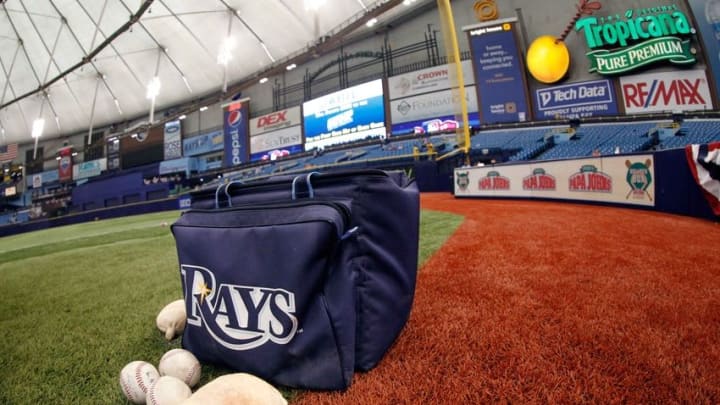
The Tampa Bay Rays have seemingly flown under the radar in their rebuild of their minor league system. What do they have down on the farm?
An Introduction
Our minor league top 10 series is coordinated by Benjamin Chase, one of our contributors at Call To The Pen.
He has poured over thousands of minor league games over the course of the year via milb.tv along with speaking with a number of team and independent scouts. These lists are based out of those conversations.
Each system will have prospects from 10 to 1, and then finish with one newcomer to the system that is worth keeping an eye on that is not in the top 10 at this time.
Conversations are certainly encouraged in the comments section on each system as we go along!
After launching the career of Andrew Friedman, the Rays saw him head to Los Angeles to run the Dodgers, and the minor league system was in need of a major talent influx.
Rays System Review
After a tremendous run from 2008-2013 where the Rays won 90 or more games in 5 of 6 seasons, making the playoffs four times, the Rays have finished 4th or worse the last three seasons, though it wasn’t until 2016 that they fully bought into a rebuilding project.
The Rays have struggled with their finances to keep a major league team together, which means they’ve needed to be willing to part with most every guy not named Evan Longoria over the last 10 years.
After launching the career of Andrew Friedman, the Rays saw him head to Los Angeles to run the Dodgers, and the minor league system was in need of a major talent influx. For all of his work in getting value at the major league level, Friedman’s group struggled in the draft, leaving the Rays system fairly dry.
In the last three years, the Rays have used trades to acquire high-upside guys rather than their more traditional “safe” guys that they were known for targeting. A great example was the trade with the San Francisco Giants in 2016 that sent Matt Moore away for infielder Matt Duffy, who could contribute immediately, pitcher Michael Santos, who is a low level guy with excellent pitching feel, and infielder Lucius Fox, who was one of the highest-paid international July 2nd eligible players of all time when the Giants signed him.
The Rays’ system has quietly moved from a system that was in the bottom 5-10 of the league just 3-4 years ago to a system that is already in the top half in the league with plenty of room to grow.
Let’s take a look at the top 10!
Next: #10
